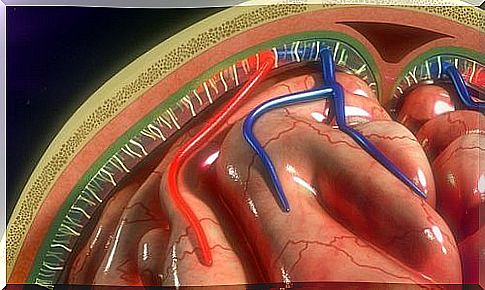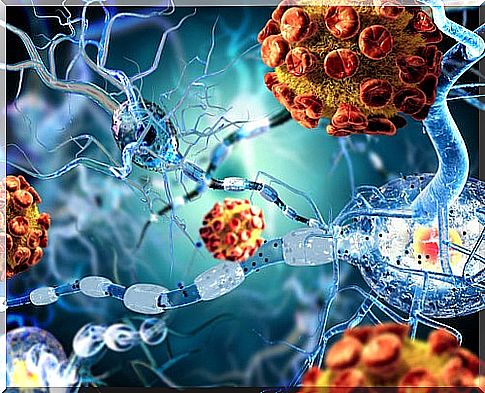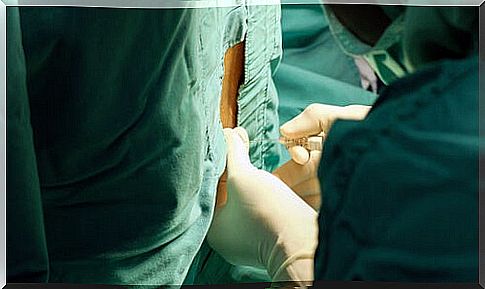What Is Meningitis?
Meningitis is a generally infectious disease characterized by inflammation of the meninges, which causes fever, headache and loss of attention.

Meningitis is inflammation of the meninges, the membranes that cover the central nervous system. Since any inflammation in our body is abnormal, this inflammation is considered a disease.
The good news is that it is an infrequent illness today. The disease is usually caused by an infectious agent. Its viral form is the most common, but bacterial meningitis is the most serious form.
Meningitis can also damage the brain. It can even cause death, which is why getting a diagnosis and treatment on time is essential.

The meninges, what are they?
Imagine for a moment that our brain is a fruit. This fruit contains a liquid, which travels through different areas of the fruit in order to keep it in good condition.
Now imagine that the skin of the fruit is a human skull. Between the skin of the fruit, the outer layer, and the fruit, there are three other layers, inner layers among which is the liquid that preserves the fruit.
These three layers which are located under the skull correspond to the meninges. These are three membranes that cover and protect the brain as well as the spinal cord.
The brain and the spinal cord are the most protected organs in the body. The meninges not only cushion blows but also act as a “filter” to prevent harmful microorganisms from entering the central nervous system.
Between the meninges circulates the cerebrospinal fluid, which also has protective and immune functions.
The geographic distribution of meningitis
Meningitis is a frequent epidemic on the African continent, especially in sub-Saharan Africa during the dry season. Epidemics in this area last between two and three years, and stop during periods of rain. Due to the lack of medical attention, the death rate of the population is high.
The most serious meningitis epidemic in the area was that of 1996: it caused more than 25,000 deaths. In Western countries, bacterial meningitis affects 3 in 100,000 people, and viral meningitis 10 in 100,000.
Risk factors
- Dry seasons
- Children
- Contiguous infections
- Immunosuppression
- Poisoning
Causes of meningitis
Meningitis is usually the result of another infection, normally caused by a virus, but there are cases of non-infectious meningitis.
Viruses
- enterovirus
- herpes virus
- HIV
- West Nile virus, which is transmitted by mosquitoes
Bacteria
Depending on the age of the individual, there is a different risk of infection with different microorganisms.
- Newborns less than 3 months old
- Group B streptococci.
- Escherichia coli
- Babies over 3 months
- Neisseria meningitidis
- Streptococcus pneumoniae
- Haemophilus influenzae
- The adults
- Neisseria meningitidis
- Streptococcus pneumoniae
- Listeria monocytogenes
How does the disease appear?
Microorganisms enter the meninges through the blood, either directly or by contiguity.
Bacteria that normally reside in the nose, mouth, or pharynx (without causing damage) enter the blood stream, and from there cross the blood-brain barrier into areas where this barrier is most vulnerable. .
The bacteria enter the cerebrospinal fluid from the subarachnoid space and cause infection of the meninges.
The other routes of transmission are the direct form (skull fractures, surgical procedures, etc.), or contiguous transmission from certain areas such as the paranasal sinuses.
Symptoms of meningitis
- The fever, especially in children and neonates
- Chills
- Nausea and vomiting
- Photophobia
- Stiff neck
- Convulsions
- The headache
- Decreased level of consciousness
The illness comes on suddenly, with fever, headache, nausea and vomiting. In young children, symptoms such as irritability and drowsiness may appear.
Brain injury
Brain edema is an injury that is associated with inflammation. It causes an increase in intracranial pressure, making it difficult for blood to reach the brain.
The brain is not getting enough oxygen. As a result, the brain cells eventually die. In some cases, especially if the meningitis is left untreated, the brain injury can be fatal.
Diagnosis of meningitis
Although the suspicion of meningitis is always clinical, a sure diagnosis is obtained by means of the lumbar puncture.
Lumbar puncture is a process of extracting cerebrospinal fluid using a needle that is inserted into the spine.

Types of meningitis
There are viral meningitis and bacterial meningitis which can be classified according to their pathogen. The former have a mild prognosis, but do not require treatment.
Bacterial meningitis is very serious and requires treatment and hospitalization of the patient. The risk of death is also greater, even with treatment.
The disease can also be classified according to its course (acute, subacute and chronic), but this criterion is falling into disuse.
The treatment
Antivirals or antibiotics should be attempted to be given to the patient as soon as possible.
In order to reduce inflammation and brain edema, corticosteroids like dexamethasone are given, thus reducing the risk of brain damage.
Other general supportive measures are taken as is the case with any acute infection: administration of fluids, fever control, etc.
Timely treatment dramatically reduces the presence of long-term sequelae, as well as the risk of death.
The possible consequences
- the deafness
- Epilepsy
- The cognitive deficit
- Hydrocephalus
- The death
In newborns and adults, the probability of the disease being lethal is 20-30%. The risk is 2% for older children.
Prevention
Currently, research is focused on preventive vaccination against meningitis in children. The vaccine, which is optional, can be administered from two months of life.
Himioprophylaxis programs with rifampicin are carried out for people at risk of contagion.









